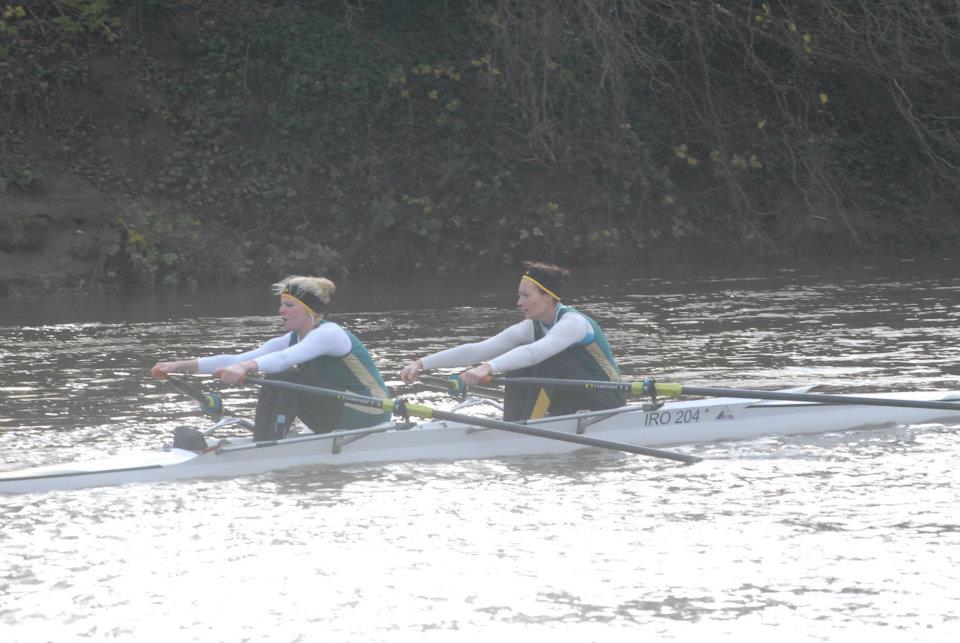The idea behind the book “Rowing Faster” was to compile the insights of top rowing experts from around the world, giving a well-founded and complete-as-possible overview of the sport of rowing. The second edition, which I have reviewed, completely updates the information contained in the first edition and broadens the scope of that presentation. The book is primarily aimed at coaches and rowers who are passionate about rowing and who are looking to expand their knowledge.
Rowing Faster is certainly comprehensive, covering all aspects of the physical acts of training, rowing and racing. What is more, the book provides an overview of the sport’s history, ethics and even offers a perspective on the future of rowing. I haven’t read any other book which covers such a complex sport as rowing quite as thoroughly.
As a competitive rower myself, I found certain chapters of the book very useful, especially those dealing with racing, strength training, and monitoring and managing training. I found chapter 11, “The Mental Side of Rowing”, particularly useful as I tend to suffer from pre-race nerves. The chapter gives helpful and practical advice on how to tackle anxiety before a race which I can easily put into practice. It is reassuring to know that it is a common problem for competing rowers but also that it can be dealt with.
However, as the book is aimed at both rowers and their coaches, there were some sections, such as those covering equipment and team management, which were less relevant to me personally. There is also a lot of science and detailed charts which can be overwhelming to the average reader like me! However, the editor acknowledges that the reader can pick and choose specific topics of interest – the book doesn’t necessarily need to be read from cover to cover to be worthwhile owning.
A new feature of the second edition is the introduction to each of the six sections of the book which have been contributed by successful athletes (i.e. they have all competed in at least one Olympic Games). I particularly liked reading these personal insights.Read the list of contributors.
Overall, this is a book well worthwhile reading. I would highly recommend Rowing Faster to anyone like me who spends much of their time training hard in order to make the boat move faster.
-Ruth James
 Ruth James (Bow Seat)
Ruth James (Bow Seat)
Ruth has been rowing for Ironbridge Rowing Club since 2009, after quickly becoming addicted to the sport following the club’s annual pub and club regatta. Since then she has been competing in regattas and head races throughout the West Midlands, both sweep oar and sculling, although her primary and favourite position to race is seven seat in the women’s eight. A recent racing highlight was to compete in WEHORR in March. Ruth trains around 5-6 days a week including land training. Her club is based on the River Severn in Ironbridge Gorge, Shropshire and she feels lucky that it is one of the most scenic settings for the sport in the UK.







This Post Has 2 Comments
I have read both of Volker Nolte’s books, and find them very interesting and informative.
The only comment I have is on Chapter 12, Training for Strength and the tables for strength to weight factors.
The squat, as normally performed, has a low correlation to rowing performance. The thighs go only to parallel as opposed to the body’s position at the catch. A better example would be the front squat bringing the body down so the hamstrings almost touch the calves. This would more closely approximate the conditions at the catch, although the squat as a whole does not correlate that closely to the force demands during the stroke.
I find the recommendations for 1RM dead lift to be rather low. At 71 years old, I did a 2.5X BW dead lift at my club after rowing practice. I think any Olympic caliber rower (especially lightweights) could easily exceed 2.5X BW. The dead lift is a very good exercise, especially for the bow rower in a pair as it helps develop a force profile more optimized for the bow rower. Maybe Ed McNeely and Volker want to make more rowers feel their strength is at Olympic level!
One point Ed did not directly make is that the 1RM is the first point on the hyperbolic strength vs repetitions curve. The greater the 1RM, the greater the force at any repetition point, but to a proportionally reduced level. Thus calling for training at all points on the hyperbolic strength vs repetitions curve is necessary for optimum rowing performance.
David Harralson
David
thanks this is really helpful – I will reproduce your comments in a new blog post. You sound very well informed. Would you be interested in writing an article for us about strength training for rowing for masters or juniors rowers?